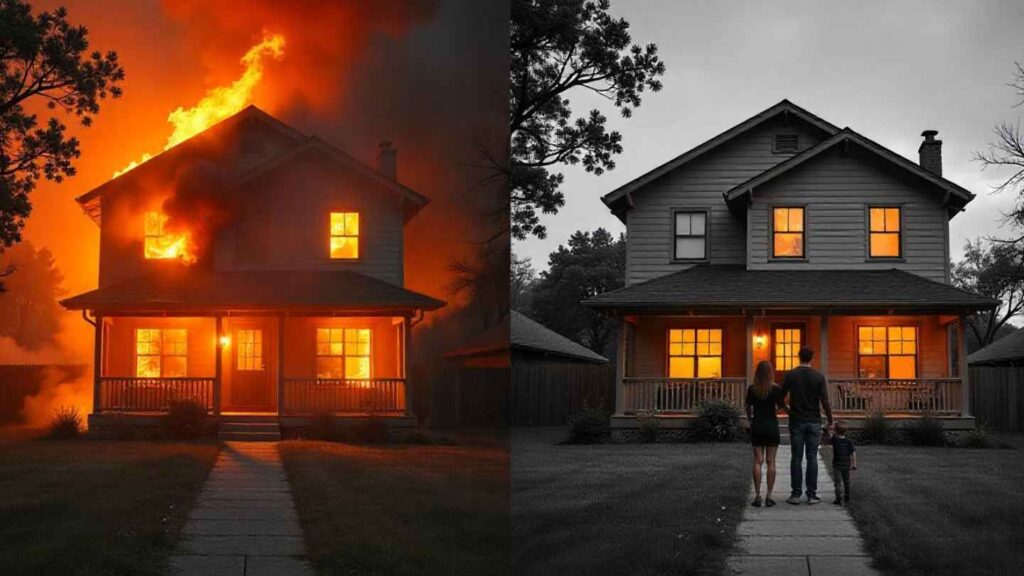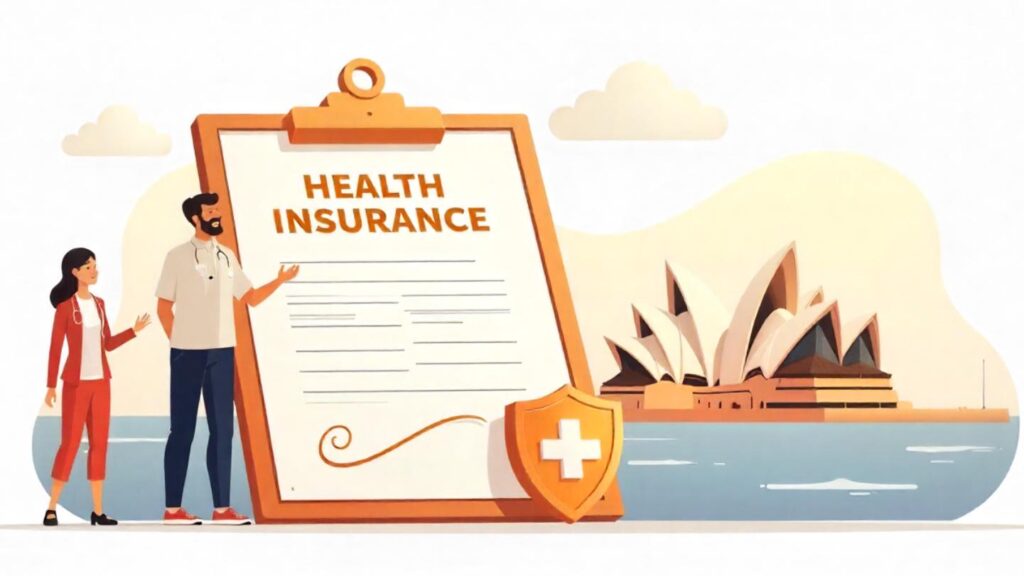When buying a home, understanding your insurance coverage is crucial. Many homeowners wonder, is hazard insurance included in homeowners insurance? The short answer is yes – hazard insurance is generally part of your homeowners policy, specifically covering the physical structure against risks like fire, wind, and hail.
However, the scope of hazard insurance and its relationship with homeowners insurance can be confusing. This full breakdown explains how hazard insurance fits within your overall coverage, what risks it protects against, and why it matters for both homeowners and lenders.
By gaining clarity, you can make informed decisions to safeguard your home and investments effectively.
What Is Hazard Insurance?
Hazard insurance is a type of coverage that protects the physical structure of your home from damage caused by specific risks. It focuses on sudden and unexpected events such as fire, windstorms, hail, and theft. This coverage helps homeowners repair or rebuild their homes after such incidents.
Lenders and mortgage companies place great importance on hazard insurance because it safeguards the property that serves as collateral for the loan.
Without this protection, the value of the home could significantly decrease if disaster strikes, putting the lender’s investment at risk. For this reason, most mortgage agreements require borrowers to maintain hazard insurance throughout the loan term.
Understanding hazard insurance helps homeowners ensure they meet lender requirements and protect their property from major risks.
What Is Homeowners Insurance?
Homeowners insurance offers broader protection compared to hazard insurance. It covers not only the dwelling itself but also personal belongings and liability for accidents that happen on your property. This comprehensive coverage helps protect your financial wellbeing in multiple ways.
A standard homeowners insurance policy typically includes:
- Coverage for damage to your home’s structure (dwelling)
- Protection for personal property like furniture, electronics, and clothing
- Liability coverage if someone gets injured on your property
- Additional living expenses if you need to live elsewhere during home repairs
Hazard insurance plays a key role within homeowners insurance by specifically covering the risks to your home’s physical structure. In other words, hazard insurance is a vital component of the broader homeowners policy, focusing on perils like fire and storms.
Together, these coverages ensure both your property and belongings have protection against unexpected events.
Is Hazard Insurance Included in Homeowners Insurance?
Yes, hazard insurance is typically included as part of the dwelling coverage within a homeowners insurance policy. This means that when you buy homeowners insurance, your home’s physical structure is protected against specific risks such as fire, wind, hail, and other common hazards.
Real-Life Examples of Hazard Insurance Coverage
For instance, if a severe hailstorm damages your roof and siding, hazard insurance within your homeowners policy will help cover repair costs.
Similarly, if a kitchen fire causes structural damage, this coverage ensures you can restore your home without bearing the full financial burden. These examples show how hazard insurance acts as the first line of defense for your home’s physical integrity.
The Lender’s Requirement vs Homeowner’s Full Protection
Mortgage lenders require hazard insurance primarily to protect their investment in the property. They focus on dwelling coverage to make sure the home can be repaired or rebuilt if damaged.
However, full homeowners insurance offers broader protection. It not only includes hazard coverage but also safeguards your personal belongings, provides liability protection, and covers additional living expenses if your home becomes temporarily unlivable.
Understanding this distinction helps homeowners meet lender requirements while securing comprehensive protection for their property and assets.
What Does Hazard Insurance Not Cover?
While hazard insurance provides essential protection for your home’s structure, it does not cover every type of damage. Common exclusions include floods, earthquakes, and sinkholes; risks that require separate, specialized policies.
These exclusions mean homeowners must carefully review their insurance documents to understand what is and isn’t covered.
Importance of Reviewing Your Policy Documents
Reading your policy thoroughly is crucial. Insurance providers clearly outline which perils are excluded under hazard insurance, so knowing these details helps avoid unexpected gaps in coverage.
Without this knowledge, homeowners may face costly repairs for damages that their hazard insurance does not cover.
Add-On Policies for Full Protection
To fill these coverage gaps, many homeowners purchase add-on policies, such as flood insurance or earthquake insurance. These additional policies work alongside your homeowners insurance to ensure more complete protection against a wider range of natural disasters.
Taking proactive steps to supplement your hazard insurance helps safeguard your home and finances from unforeseen events.
How to Check If You Have Hazard Insurance Coverage
Checking whether you have hazard insurance coverage is essential for protecting your home. Follow this step-by-step guide to review your insurance policy and confirm your coverage status.
Step-by-Step Guide to Reading Your Insurance Policy
Start by locating your homeowners insurance policy document. Focus on the section labeled “Dwelling Coverage” or “Property Coverage.” This part typically outlines hazard insurance details, including the risks covered such as fire, wind, and hail.
Look for specific terms like “perils insured against” or “covered hazards” to understand which events are protected.
Tips for Contacting Your Insurer
If the policy language seems confusing or unclear, contact your insurance provider directly. Ask them to explain whether hazard insurance is included and what risks it covers.
Additionally, request a copy of your declarations page, which summarizes your coverage and limits.
Key Terms to Look for in Your Documents
When reviewing your documents, keep an eye out for key phrases like “hazard insurance,” “dwelling coverage,” “perils,” and “exclusions.” These terms provide insight into the scope of your protection and help identify any gaps.
By actively reviewing your policy and communicating with your insurer, you can ensure your home has adequate hazard insurance coverage to meet both lender requirements and your personal protection needs.
Should You Purchase Additional Coverage?
Sometimes, the standard hazard insurance included in homeowners insurance isn’t enough to fully protect your home. Additional coverage becomes necessary when you live in areas prone to specific risks that hazard insurance typically excludes.
When Extra Protection Is Needed
If your property is located in a flood zone or an earthquake-prone region, relying solely on hazard insurance can leave you exposed to significant financial loss. In these cases, purchasing separate policies provides crucial protection against these high-risk events.
Flood Insurance and Earthquake Insurance: When to Consider Them
Flood insurance is essential for homeowners in flood-prone areas, as standard hazard coverage generally excludes water damage caused by flooding.
Similarly, earthquake insurance protects against the costly structural damage earthquakes can cause, which is not covered by typical hazard policies.
By evaluating your location and risk factors, you can decide whether to invest in these additional policies. Taking proactive steps to supplement your homeowners insurance ensures you have comprehensive protection tailored to your needs.
FAQs
Is hazard insurance a separate policy?
Hazard insurance is usually included as part of your homeowners insurance policy, not a separate policy. However, some risks like floods and earthquakes require separate coverage.
Do I need both homeowners and hazard insurance?
Homeowners insurance typically includes hazard insurance as part of its dwelling coverage. While hazard insurance protects your home’s structure, homeowners insurance also covers personal belongings, liability, and additional living expenses.
Will my mortgage lender accept basic hazard insurance only?
Most mortgage lenders require hazard insurance to protect the dwelling, but they may not insist on full homeowners insurance. Still, having comprehensive homeowners insurance provides broader protection beyond lender requirements.
Final Thoughts: Are You Fully Protected?
Understanding the relationship between hazard insurance and homeowners insurance is crucial for ensuring your home is well protected. Hazard insurance typically forms part of the dwelling coverage within your homeowners policy, covering damages from risks like fire and storms.
Meanwhile, homeowners insurance offers broader protection that includes your personal belongings, liability, and living expenses.
Regularly reviewing and fully understanding your insurance coverage helps identify any gaps, especially for risks not covered by hazard insurance such as floods or earthquakes.
To secure the right protection for your unique situation, consider speaking with a licensed insurance agent. They can provide a personalized assessment and recommend coverage that fits your needs and location.
Taking these steps empowers you to protect your home and assets confidently, giving you peace of mind against unexpected events.



